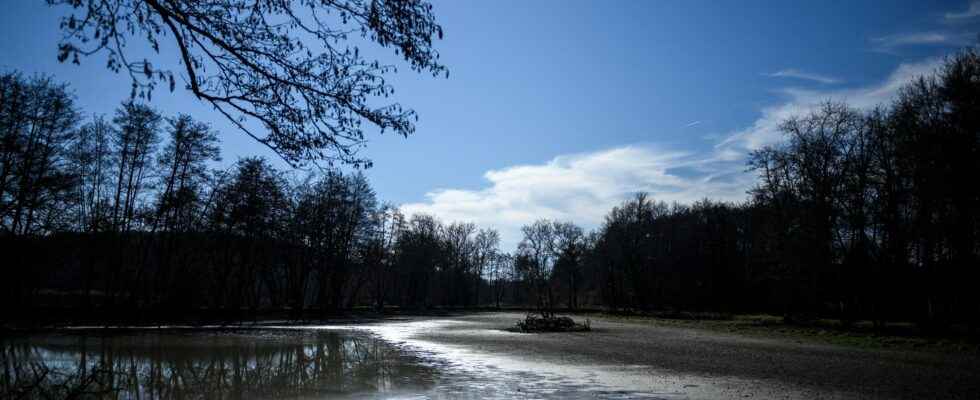Since July the ballet of trucks has not stopped. Coucouron, in Ardèche, has been living on a drinking water infusion since the summer. “The population has never lacked water, but for that it had to be transported from neighboring towns”, recognizes Jacques Genest, the mayor of this village of 800 souls, and “382 second homes” where 60,000 liters of Water is delivered daily by tanker trucks. The drought that set in this winter now has a very concrete aspect. “The three main sources that supply the town have all decreased in volume”, blows the city councilor. And for good reason ! Since January 21, metropolitan France has not experienced any real rain. The longest period “since the start of the measurements in 1959”, announced Météo France last week.
In the heart of winter, France is therefore worried about spending another dry summer. “Last summer, we had up to 700 municipalities affected by drinking water problems. If we don’t take measures upstream, we run the risk of having an even higher figure. next summer and on larger territories”, warned last week Christophe Béchu, the Minister of Ecological Transition. The Bureau of Geological and Mining Research (BRGM) is alarmed: the rains infiltrated during the autumn are very insufficient to compensate for the deficits accumulated last year. More than three quarters of the water tables remain below monthly normals. “We are going to have deficits whatever happens, we have one month left to take advantage of the recharge period, then the vegetation will start again, and it will be a new period of emptying of the aquifers”, warns Marie Pettenati, engineer at BRGM .
Restrictions are accelerating
To anticipate this new record summer, the Minister for Ecological Transition, Christophe Béchu, regularly brings together prefects and water stakeholders. “The goal is to remind state representatives not to have a shaking hand to issue orders now,” we explain to the Ministry of Ecological Transition. At present, four departments are already on heightened alert: Ain, Isère, Bouches-du-Rhône and Pyrénées-Orientales. A figure that will inevitably climb, warned Christophe Béchu.
Already, restrictions are accelerating. In the Pyrénées-Orientales, particularly affected, the prefecture has reinforced the measures already in force since last summer and has placed the entire department at the heightened alert level. The remedies are known: ban on individuals watering lawns, filling individual swimming pools or even cleaning their vehicles… And on this agricultural territory, made up of market gardening and orchards, withdrawals are already limited. “We cut off some irrigation canals, with only 3 days open out of the 15 that are usually agreed,” explains Alain Halma, deputy director of the department’s chamber of agriculture. More than summer, he dreads April, a crucial time for vegetables and fruit trees. “There is the risk of additional savings, and the question will arise of taking from rivers beyond environmental limits,” he warns.
Plug the leaks
In the short term, few solutions are available to farmers, sowing is already done for many. Reflection must now focus on adaptation. “The goal is to have technical work on more covering seeds, to prevent the soil from drying out, and varieties that consume less water”, explains Olivier Dauger, elected referent energy, climate, carbon at the National Federation of Farmers’ Unions (FNSEA), for whom certain crops such as corn (water-intensive at the height of summer) are not discredited. Last week, the Minister of Agriculture, Marc Fesneau, confirmed that 60 new agricultural hydraulic works projects, such as the controversial basins, would be commissioned by June. A solution sometimes, but which also reveals imperfections. “They must be able to fill up in winter, it does not work every year, but a priori we say to ourselves that 3 or 4 years out of 5 they will be useful”, judges the elected representative of the FNSEA.
While waiting for the summer, and when possible, the villages are working to repair their networks. Leaks represent about 20% of losses through pipes nationwide, sometimes more in the most dilapidated sectors. The summer crisis was mobilizing for many municipalities which were reluctant to launch real maintenance work, now the sites are multiplying. At Coucouron, this work has made it possible to limit losses, but without responding to the drop in spring levels. “So we are opening a call for tenders for a big job: bringing still abundant springs located 6 kilometers away, in the heart of the town”, relates Jacques Genest, who hopes that this will be done for this summer.
Necessary drop in demand
Other villages, such as Arlanc, in Puy-de-Dôme, are thinking about installing pumping and treatment stations from the rivers. Elsewhere, projects for the reuse of treated wastewater are under study. So many measures which would make it possible to increase the offer, but which also risk diverting from a reflection on the uses of water.
“Adapting to the lack of water is mainly done by trying to increase the supply, that is to say with surface storage, reuse, or desalination. This would make it possible to meet short-term needs. term, but, to prepare well for these multi-annual droughts, we must not put aside the debate on demand”, nuance Gonéri Le Cozannet, researcher at BRGM, and co-author of the latest IPCC report. A little music that is starting to make its way into people’s minds.
